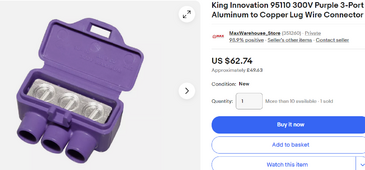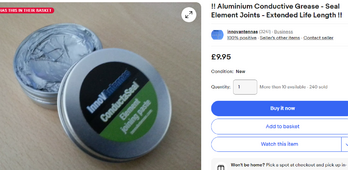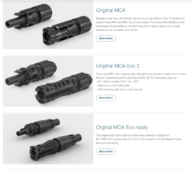Boron
New Member
I will use pure Stabuli in my next few builds.Bolting ring terminals must be a lot of fun with 600VDC (well, I use 480Voc in my strings.)
My first system was same voltage and screw terminals in PV junction boxes, but Real Goods sold me a segmenting breaker so the array was divided in 6 parts during assembly. Only connected in series when breaker turned on.
Wiring UF cable between junction boxes (neutral carried the return), I inadvertently touched in a 100VDC loop and pulled a nice flame.
I like MC3/MC4. Just want them to be reliable. I will use pure Stabuli in my next few builds. Comes on the panels and on the RSD, just have to buy the right parts for the rest. (probably have a few random knockoffs in what newer panels I mounted in recent years, before I learned the Truth.)
They started as a sound precision product , but the market is flooded wit Cheap Charlie knockoffs at 20% of the original price - fire risk on a roof. Difficult to find the genuine product available now (unless you are in Germany)








